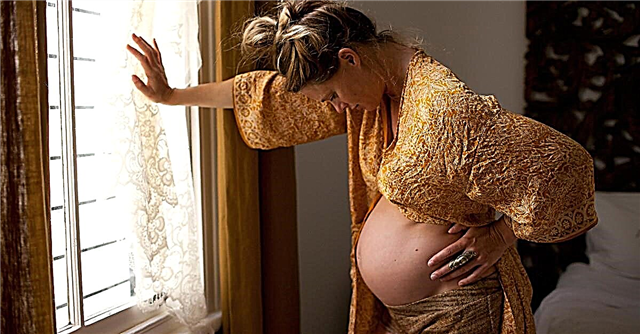
Hemorrhagic diseases, which include murine fever, are quite difficult in children. Timely and correct diagnosis will help prevent dangerous complications of the disease.

What causes?
Mouse fever is a viral disease. Both adults and children can get sick with it. The disease is rather difficult. Its danger is that after an illness, dangerous complications can develop.
The disease got its name not by chance. Viruses are carried by rodents. They are the sources of infection. According to statistics, kids living in rural areas get sick more often than their urban peers. It is very easy for a child to become infected when he is on vacation or in the country.

Given the peculiarity of clinical manifestations, this disease is referred to as hemorrhagic. According to statistics, the peak incidence among children occurs between the ages of 2 and 10. Boys can become infected as easily as girls. The risk of infection increases many times over if personal hygiene rules are violated.

You can get infected in several ways. Air pollution in rooms with rodents can cause airborne contamination. You can also get infected by the alimentary route. In this case, viruses enter the child's body through dirty hands. By playing in the yard and neglecting hand washing, babies can easily get an infection.

A less rare variant of infection is contact. In this case, the disease develops after direct contact with rodents or the places where they live. The smallest particles of excrement easily fall on the hands of the child. If after that the baby immediately sits down at the table and pulls something into his mouth, then he can get sick very quickly.

How does it manifest?
The first signs of the disease appear after the end of the incubation period. In mouse or hemorrhagic fever, it is usually 20-25 days. In some cases, this period can be shortened or lengthened. It depends on the physiological characteristics of the child, as well as the presence of concomitant chronic diseases or immunodeficiency.
The characteristic symptoms of the disease are:
- A rapid and persistent rise in body temperature. Quite often, it rises to 39-40 degrees. The febrile condition persists for several days and is difficult to relieve with antipyretic drugs. Babies under 5 years of age have severe fever and severe chills.
- The onset of a headache. It is often unbearable. The intensity of the pain syndrome is pronounced. The use of analgesics and anti-inflammatory drugs in the early days of the disease does not bring relief.
- The appearance of nosebleeds. The viruses that cause fever have a toxic effect on the smallest blood vessels - the capillaries. Their increased fragility leads to the appearance of nosebleeds.

- Soreness in muscles and joints. Small hemorrhages in the area of the joints leads to pain. The severity of the condition also provokes severe muscle weakness and fatigue.
- Increased peripheral lymph nodes. They can increase in size several times. On palpation, moderate pain appears. Lymph nodes are usually tightly adhered to the skin.
- Violation of the outflow of urine. The portions become small in size. The total amount of urine per day also decreases. In severe cases, anuria may develop - complete urinary retention.
- The occurrence of gingival bleeding. Usually, the symptom is detected when eating solid food. The pieces cause trauma to the damaged mucous membranes, which contributes to bleeding.

- Great weakness. The general well-being of the baby is greatly disturbed. The child becomes overly passive, tries to spend more time in bed. Even the usual loads and actions can lead to a worsening of the course of the disease.
- Deterioration of vision. This symptom is due to the presence of hemorrhagic damage to the feeding vessels of the eyes. Usually, a sick child develops blurred perception of objects or double vision when examining nearby objects.

- Severe chills. Occurs at an altitude of elevated body temperature. It is usually very difficult for a sick child to keep warm. The use of anti-inflammatories can help manage this adverse symptom.
- The appearance of blood in the urine. This symptom is extremely unfavorable. It indicates that the inflammatory process has reached the kidneys. Hematuria or the appearance of blood in the urine indicates that a sick child should be urgently admitted to a hospital.

Diagnostics
When the first adverse symptoms of the baby appear, it is imperative to show the doctor. Mouse or hemorrhagic fever is an infectious disease. The treatment of this disease is carried out by an infectious disease doctor. Since the disease is quite severe in children and it is dangerous with the onset of adverse complications, the therapy of the disease is carried out in the infectious diseases department, equipped with equipment for emergency care.

To establish the functional disorders that appear with mouse fever, additional tests are required. All babies undergo general clinical blood and urine tests. They help to establish: how severe the disease is in the child. To exclude dangerous complications of the disease, the baby is monitored and monitored for the work of the heart, conducting electrocardiography.

Treatment
Disease therapy is carried out throughout the acute period of the disease. At this time, the baby must necessarily comply with bed rest. Such a forced measure allows you to prevent dangerous complications from the side of vital organs.


Adequate drinking regime is necessary for good kidney function. Various fruit drinks and compotes made from lingonberries, cranberries and other berries are suitable as drinks. These drinks contain a large amount of ascorbic acid, which is necessary for the active functioning of the immune system. Ordinary boiled water is also suitable.

All sick babies are prescribed nutritional therapy. It limits the range of products. All incoming food should not be salty or spicy. Restricting table salt is necessary to ensure adequate kidney function and prevent edema.

The course of treatment is usually made by an infectious disease doctor. The doctor prescribes antipyretic and anti-inflammatory drugs. With pronounced formation of blood clots, anticoagulants and antiplatelet agents are prescribed. All medications are prescribed in the form of droppers or injections. With the help of such an introduction, drugs quickly enough enter the bloodstream and help to effectively eliminate the symptoms of the disease.

To strengthen immunity in the subacute stage, multivitamin complexes are prescribed. The composition of these preparations contains all the necessary trace elements necessary for the recovery of the baby and improving his well-being. Taking vitamin complexes is also permissible at the post-hospital stage. Usually, these drugs are prescribed for one to three months.

Prevention
To prevent infection with mouse fever, keep in mind the following guidelines:
- Be sure to teach your child to maintain personal hygiene. Before eating, as well as after the street, the baby should wash his hands regularly. You should be especially careful to ensure that the child observes this postulate after playing on the street or while relaxing in the countryside, as well as in the country.

- Treat your garden houses regularly for pests. You should also carefully monitor the cleanliness of the garage or cellar. Usually in such premises rodents often live, which are the cause of the disease. If you cannot eliminate the mice on your own, contact special organizations that process with the help of professional tools for help.

- If you are planning an outdoor adventure, try to pack your food carefully. Store all bulk products in tightly sealed containers. Dishes ready for a picnic should be placed in metal containers. When you are outdoors, try not to lose sight of the food plates.
- When the first signs of the disease appear, do not self-medicate! Mouse fever is a dangerous disease that requires treatment in a hospital setting.


How to protect yourself and your children from mouse fever is a video guide for everyone who cares about their health.



